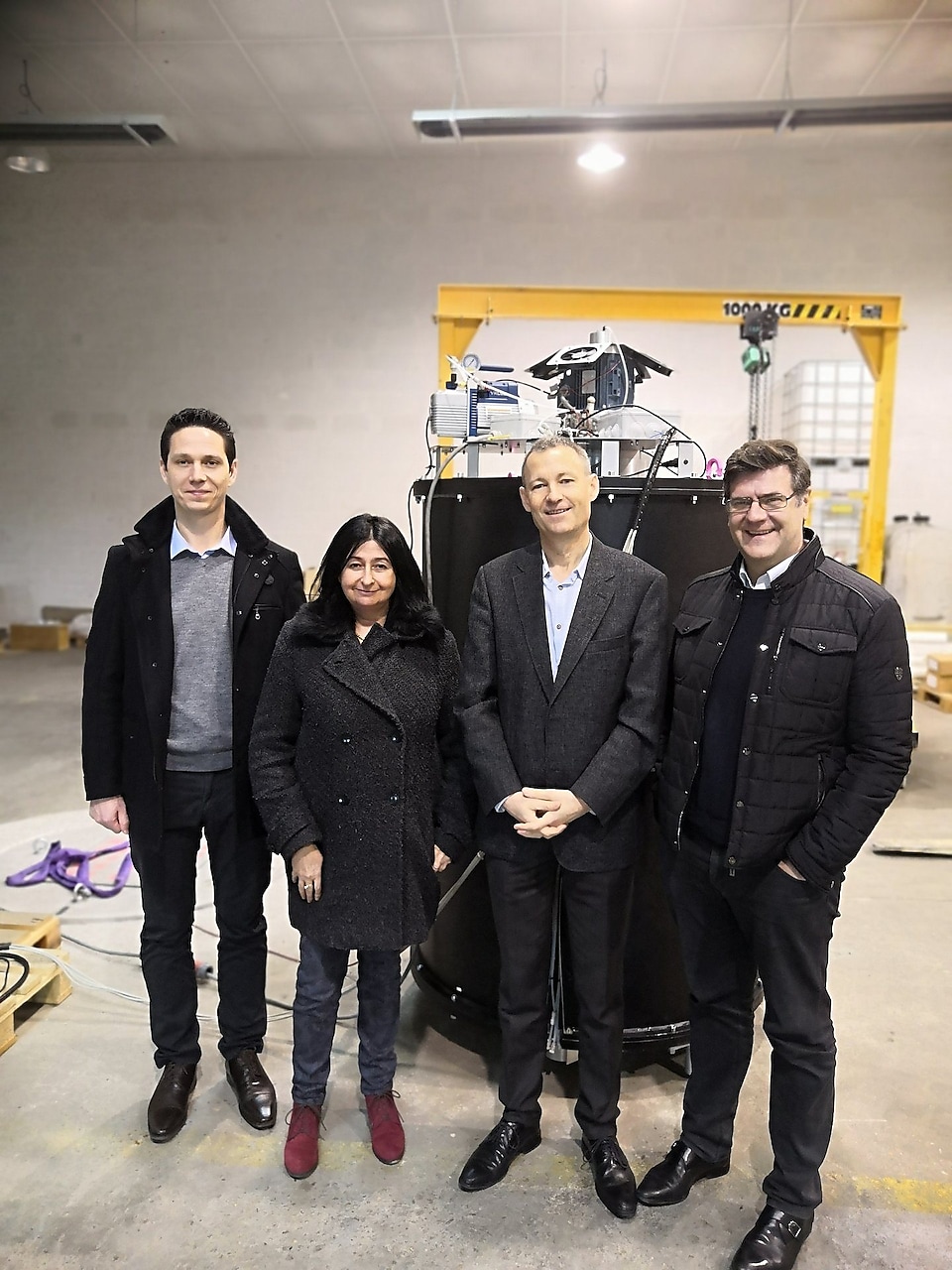
Energiestro: Using Concrete to Power the World
May 14, 2019
With their innovative concrete flywheel, this Shell LiveWIRE France entrepreneur has developed a sustainable, affordable way to store solar power.
When we think about concrete, our minds jump to the usual suspects – sidewalks, buildings, bridges, and roads. But what if concrete also holds the key to affordable, renewable energy storage?
André Gennesseaux is the founder of Energiestro, an energy storage company that uses prestressed concrete in flywheels to store renewable energy safely and affordably. Founded in 2001, Energiestro’s mission is to provide energy storage at a fraction of the cost of batteries. According to Gennesseaux, energy storage is the biggest barrier to expansion of widespread renewable energy production and usage.
“Moving away from fossil fuels is not a technical problem because we have a lot of renewable energies,” he said. “The problem is cost. People will switch when the price is right.”
Energiestro’s storage solution is a flywheel that relies on prestressed concrete. Flywheels are cylinders that rotate at high speeds to store kinetic energy. Energiestro’s flywheel is designed to be used in conjunction with solar panels, storing solar energy safely so that consumers can tap into this energy at any time of day.
According to Gennesseaux, flywheels could solve the shelf-life problem faced by batteries. The materials could also be easily recycled, unlike many batteries. Earlier in his career, he wanted to explore how flywheels could serve as energy storage solution and pitched his idea to his employer. When they were not ready to fund the idea, he decided to quit and found Energiestro.
Developing the flywheel as an energy storage solution was an iterative process. Over the course of the next decade, the Energiestro team tried again and again to make this solution work.
“First we tried steel but we found that the cost of steel was too high,” he said. “And then we tested cast iron, which is cheaper than steel but still too expensive. Finally, we decided to think about something really different. We’ve tried all of the classic materials. What’s next?”
Gennesseaux decided to give concrete a shot. Concrete is cheap and readily accessible but posed one significant problem – it doesn’t work well with flywheels. Gennesseaux thought he could adapt both concrete and the flywheel to work together. He decided to try prestressed concrete, which is extremely compressed concrete. He then adapted the flywheel to access the energy by reducing the compression rather than pulling on the material. To Gennesseaux’s surprise, concrete not only worked but it far exceeded expectations.
“Not only did it work, the concrete flywheel stored energy at one-tenth of the cost of batteries,” he said. “I didn’t trust the results at first. I had to check it many times before I was convinced!”
With this breakthrough under his belt, Gennesseaux turned his attention to developing prototypes and attracting investors. In a fortuitous turn of events at the time, a former classmate appealed to Gennesseaux to serve as a presenter for a 2015 TED talk series in France.

This talk quickly became one of the most viewed TED talks in France, putting Energiestro in front of future customers and investors for the first time. These returns haven’t stopped as potential customers continue to find and watch this video four years later.
As Energiestro began to grow beyond the design phase, the team quickly realized they needed additional support. They are a team of technical experts – researchers and engineers – and not experts in business development. This is where Shell LiveWIRE comes in. As a Shell LiveWIRE entrepreneur, Energiestro has access to mentors across Shell France’s network. For Gennesseaux, this guidance has been invaluable.
“Shell is providing a lot of support on shaping the business plan and advising us on how we can efficiently enter the market,” he said. “For us, it’s very important to have people with the right expertise but we don’t have the resources right now to hire a business development team.”
Shell LiveWIRE has also provided guidance on scaling production. On the road to ramping up production, the Energiestro team are planning to build a pilot factory in France. And with help and guidance from Shell LiveWIRE, the team has developed an extensive business plan to secure investment in the factory.
Peter Ross, Shell’s general manager of Direct Lubricants Europe, has been coaching the Energiestro team. He said, “It is a pleasure to work with people driven by making a difference but at the same time they have an ingenious solution to energy storage. I strongly believe that there is a huge market for this kind of solution.”
In the long term, Gennesseaux hopes to partner with companies around the world to produce flywheel energy storage devices.
“Our dream is to connect everyone, bringing energy to those who don’t have access now,” he said. “We’ve seen this happen with solar panels. At the beginning, they were produced for wealthy consumers that could afford the costs but as production became widespread, solar panels became more affordable. There’s a lot of demand, and we have a lot of countries where we can begin production easily.”
Gennesseaux said he sees a lot of momentum in the energy storage space.
“Now many battery companies are backed by larger energy companies,” he said. “We really see that things are changing. Now that the time has come for clean energy.”
Gennesseaux said he doesn’t see battery companies as a threat to Energiestro, but rather a complement to one another. In looking toward large-scale production and the changing landscape of renewable energy, “We know that energy storage will be a mix of different technologies,” He claims. “No one solution will solve all of the problems.”